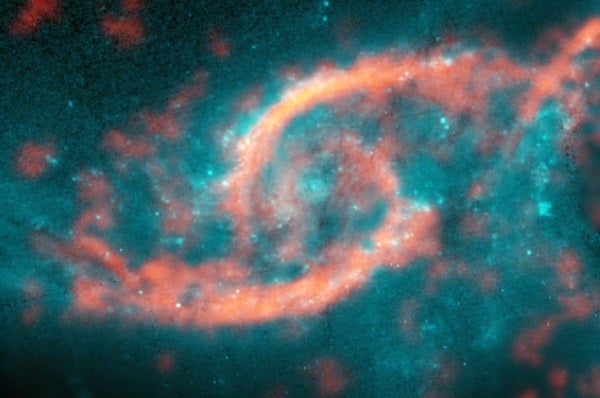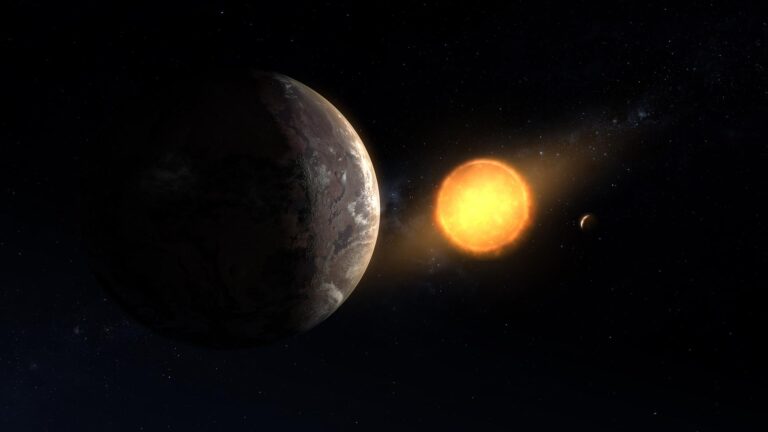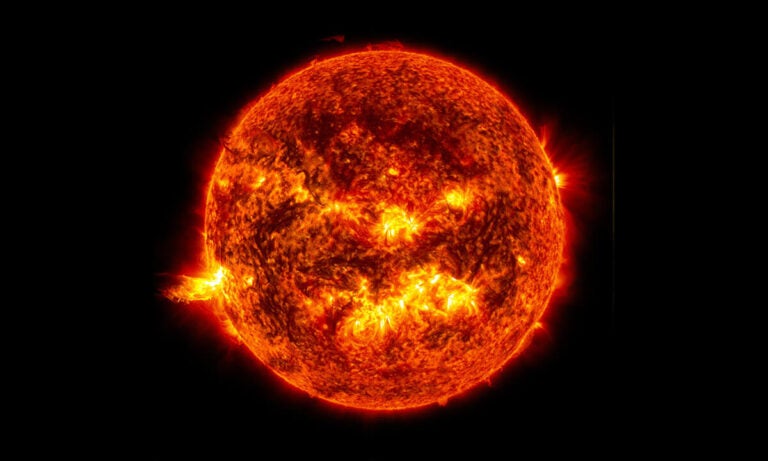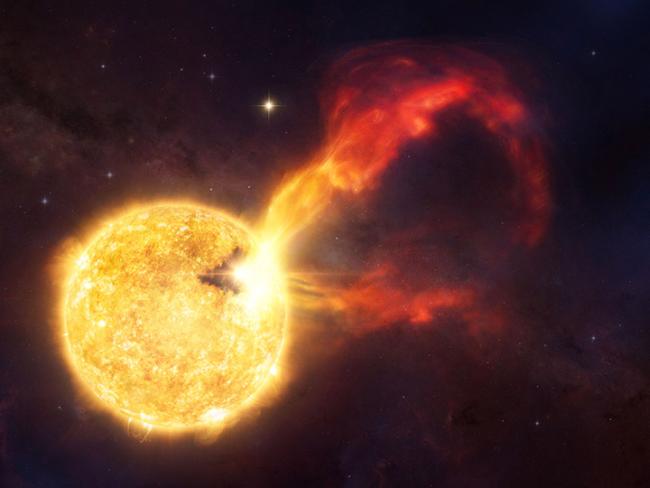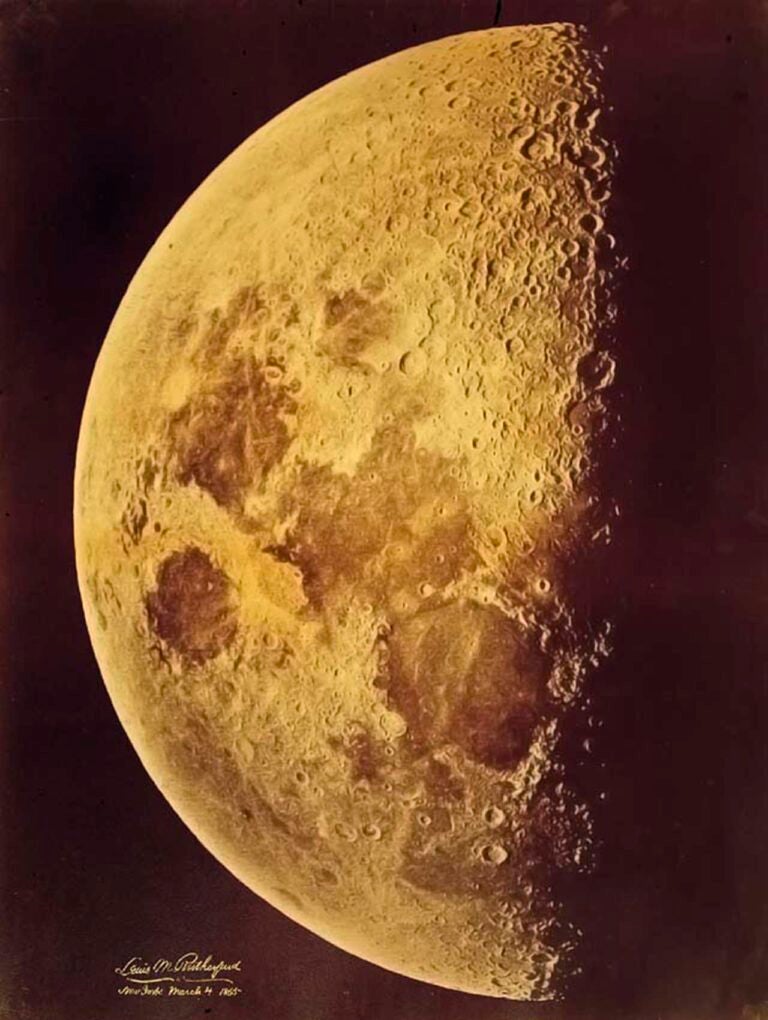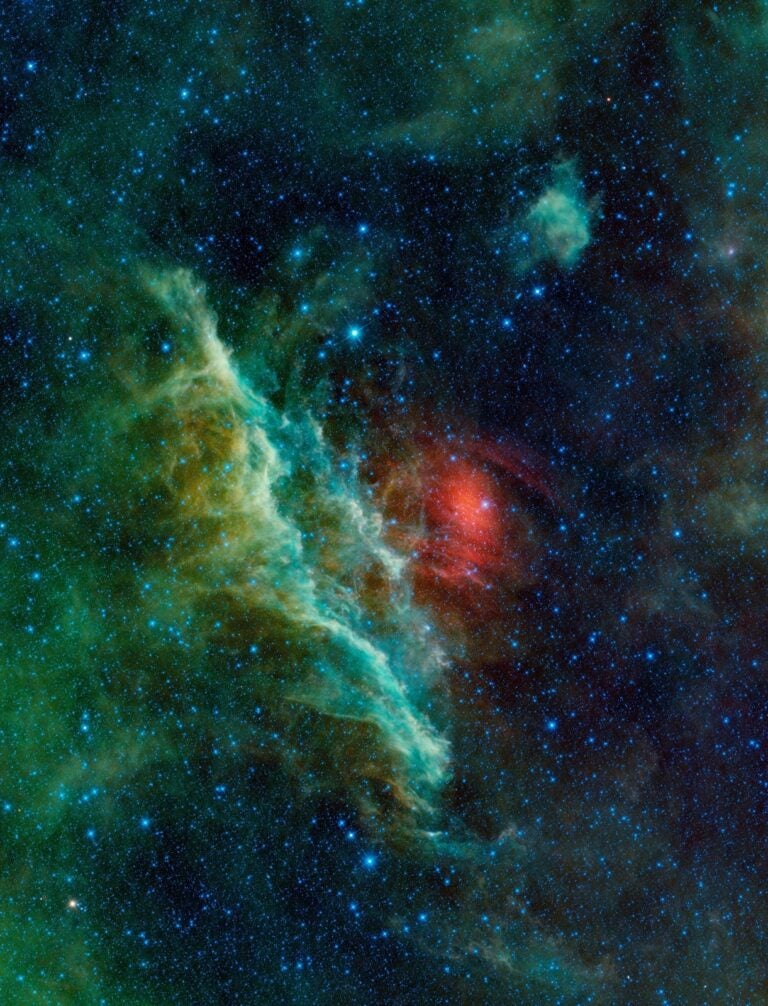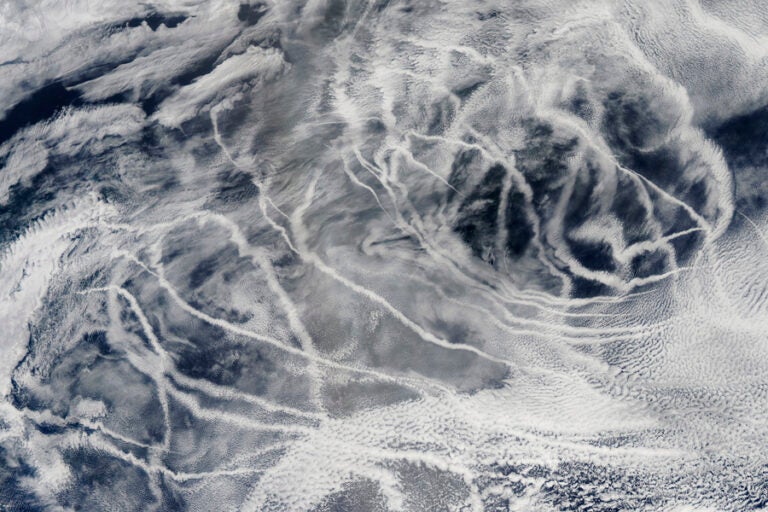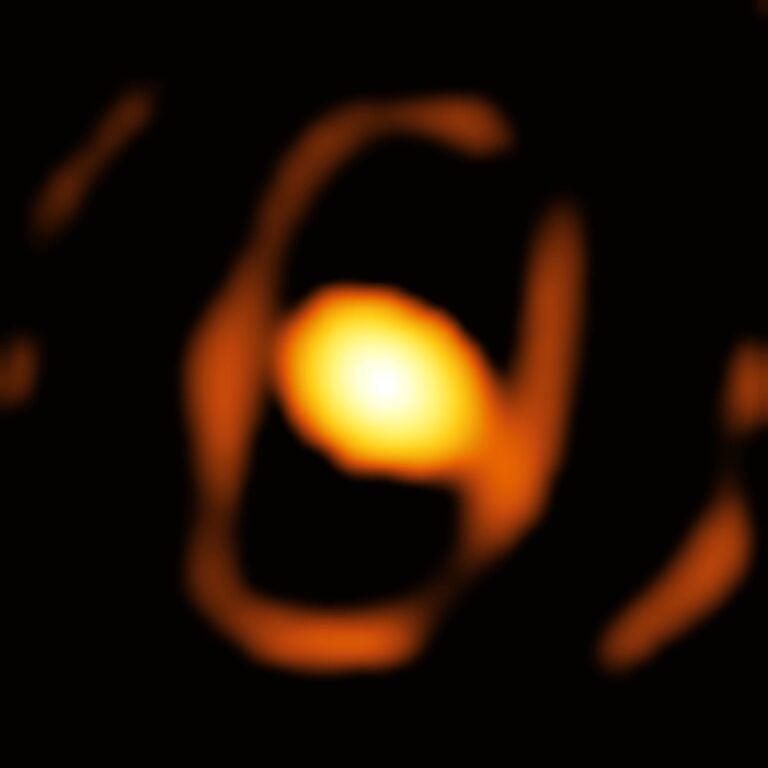If it looks like spiral galaxy IC 2613 is staring at you, it’s not being rude: a collision with its nearest neighbor sent a wave crashing through the galaxy, which produced the strange eye-like structure.
It was a tsunami on a galactic scale. A wave of gas and star clusters crashed inward through the disc of spiral galaxy IC 2613 after it sideswiped NGC 2207. The collision, 114 million light years away in the direction of Canis Major, sent cosmic ripples coursing through both galaxies, but in IC 2613, the wave took on a bizarre form: it looks like a vast, staring eye at the heart of the galaxy. It’s a rare formation that’s helping astronomers better understand what happens when galaxies collide.
When Galaxies Collide
The collision was just the first step of a fatal dance between IC 2613 and NGC 2207, whose orbits around their shared center of gravity will bring them into contact several more times before they finally merge into a single galaxy in about a billion years. In their first pass, which began about 240 million years ago, the two doomed galaxies basically bumped shoulders; they brushed just close enough together to graze each other’s spiral arms.
Their close encounter set off a galactic tidal wave in IC 2613. Just as the Moon exerts some gravitational pull on the Earth, which causes the oceans to surge back and forth in daily tides, NGC 2207’s gravitational influence tugged on gas clouds and star clusters in IC 2613.
Gas and stars rushed outward into two long tidal arms, which point, more or less, at (and directly opposite, at the other side of the galaxy) the place NGC 2207 occupied when its tidal pull was strongest. As material stretched outward in that direction, it pulled material inward on either side – think about how a rubber band gets narrower when you stretch it.
“The tidal force on IC 2163 by the companion NGC 2207 is like any tidal force, it stretches in the direction pointing to the companion and it contracts in the perpendicular direction,” said co-author Bruce Elmegreen of IBM. “This perturbation causes gas and stars to rush outward into tidal arms and inward into the ocular.”
So material from the outer disc also rushed inward toward the center of the galaxy at about 100 km per second, and you can see the result in an image of IC 2613. Two long, narrow curves of bright material seem to sketch out the shape of an eye around the center of the galaxy. Those bright curves are tidal waves of gas and stars propagating through the disc of IC 2613. They look a bit like eyelids, with their inner ends curved a bit to hint at the rounded shape of an eye. That’s thanks to a cool trick of physics, which has to do with how things move on a rotating plane.
Further out on the rotating disc, most of the wave’s momentum is in a straight line as it rushes inward toward the center. Normally everything in the galaxy would be rotating around the galactic center, but the tidal pull of NGC 2207 caused that rotation to falter, sending the wave of material plunging straight inward. Further inward on the disc, that changes. Because angular momentum increases closer to the center of gravity – picture a figure skater pulling her arms inward to spin faster – the wave’s straight-line speed decreases and it curves instead. That explains the inner curves of IC 2613’s eyelids.
As the wave’s rush toward the galactic center slows down, the material it carries begins to pile up. Bruce Elmegreen compares it to the way ocean waves on Earth lose their momentum in the shallows and dump water and sand on the beach. When all that molecular gas piles up in one place, though, it’s dense enough to trigger bright explosions of star formation.
A Rare Sight
Computer models had previously predicted that a collision between galaxies could produce an eye-shaped wave just like this one, but this is the first time astronomers have had the chance to observe in the real universe. It took a very specific set of circumstances to give IC 2613 its glowing eye. IC 2613 had the good luck to bump into a neighboring galaxy – NGC 2207 – that happened to be orbiting in the same plane and the same direction in which IC 2613’s disc rotates. Such encounters may have been more common in the early universe, when galaxies were packed more closely together, improving the odds of a collision happening at just the right angle, but in more recent times, they’re relatively rare.
When the Milky Way eventually collides with our neighbor Andromeda, for example, our galaxy probably won’t end up with a cool ocular wave to show for the adventure. “If Andromeda were orbiting the Milky Way in the plane of the Milky Way and in the same direction as our spin, that could produce similar ocular structure. Simulations that I’ve seen show Andromeda and the Milky Way orbiting in orbits inclined to their planes, so probably won’t produce such a structure,” said co-author Debra Elmegreen of Vassar University.
Not only is IC 2613’s eye a rare sight, it’s also short-lived. Such structures last only a few tens of millions of years, which in galactic terms is like the blink of an eye. That’s why astronomer Michele Kaufman and her colleagues were so excited to have the chance to study this one. They recently published their results in the Astrophysical Journal.
Crashing Waves
Kaufman and her colleagues used ALMA to track the motion of gas clouds in the eyelids. To accomplish this, they used carbon monoxide as a tracer for the more abundant but harder-to-see molecular hydrogen that actually provides most of the fuel for star formation. “Molecular hydrogen is the dominant molecule in clouds, but is difficult to detect,” explained Debra Elmegreen Carbon monoxide is only about 1/10,000th as abundant, but radiates in a 2mm infrared wavelength that stands out readily in the cold of a molecular gas cloud.
What they found is that the tidal wave piled up tremendous clouds of gas and triggered an intense blaze of star formation in IC 2613. “We find that there are over 300 molecular clouds with masses of a million times the mass of the sun, with the most massive clouds in the eyelid regions,” said Debra Elmegreen. “The star complexes in the eyelid have ages of about 200 million years, about the time of [NGC 2207’s] closest approach, which suggests that they were triggered by the close interaction.”
“In contrast, star complexes elsewhere in the galaxy pair range in age from less than one million years to almost 10 billion years old, and 5% of them are older than 200 million years,” said Kaufman. Now she and her team want to understand how star formation in the eyelids differs from the normal kind of star formation that isn’t caused by a giant galactic tidal wave. To answer that question, they’re comparing their ALMA observations with some earlier data from the Hubble Space Telescope.
“The ALMA data show that the brighter star-forming regions in NGC 2207 tend to have more gas in the form of atomic hydrogen than in the form of molecular hydrogen, which is very unusual,” said Kaufman. That means the gas clouds are made up of individual hydrogen atoms, rather than the pairs of bonded hydrogen atoms which form the molecule H2. That may be the result of turbulence in the clouds, thanks to the giant wave that swept them across the galaxy and deposited them in the eyelids.
The gas clouds in the eyelids are very, very turbulent, according to the researchers, who published a study of that turbulence in another paper earlier this year. The motion of the wave created what Kaufman describes as “intersecting gas streams and shocks, which, together with the direct radial impact, convert translational kinetic energy into turbulence or dissipate the energy as heat.”
“The turbulence puffed up the outer envelopes of the gas clouds to lower densities, which made them primarily atomic gas, and shocks from the elevated turbulence resulted in smaller, higher density molecular cores than normal,” she explained. Soon, the team plans to publish another paper comparing the star clusters in IC 2163’s eyelids with those elsewhere in the galaxy, and they continue to study the strange structure created by the tidal wave.
In other words, they’re keeping an eye on it.

